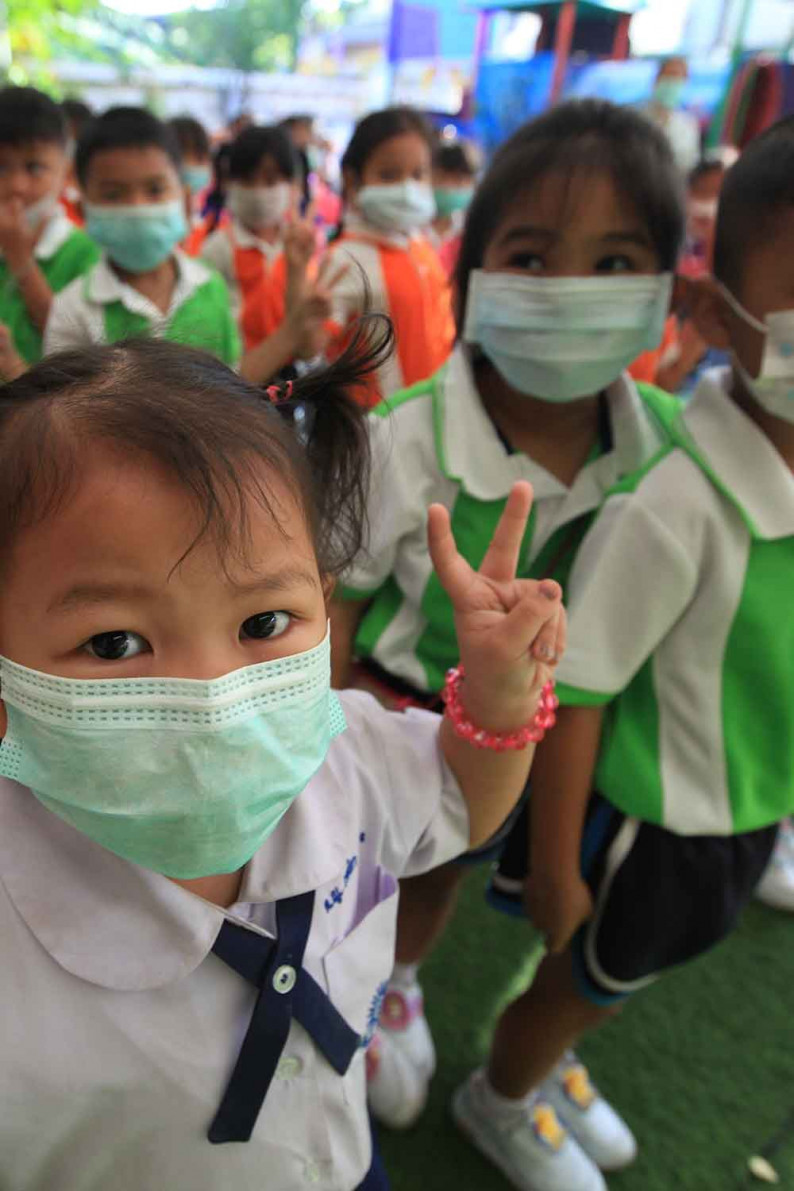
Officials in a Chinese city on the border with North Korea say they cannot figure out where persistent new Covid-19 infections are coming from -- and suspect the wind blowing in from their secretive neighbour.
Despite being locked down since the end of April, daily cases have been trending up in Dandong, a city of 2.19 million. Most of the infected people found in the community during the past week had not been outside of their housing compounds for at least four days prior to their diagnosis, according to the city’s Center for Disease Control.
While the virus is flaring elsewhere in China, including in its northern regions, officials say they’re unable to establish a chain of transmission. Their suspicions have instead settled on their neighbour, with authorities urging residents living by the Yalu River that runs between the two countries to close their windows on days with southerly winds, according to a government notice. They’re also being asked to go for more frequent testing, said a Dandong resident, who asked not to be named for fear of reprisal.
There is not any clear scientific evidence backing up the theory. Research shows that infections through airborne transmission are unlikely over long distances, particularly in outdoor settings without repeated exposure. And not everyone in China is convinced. Many social media users scoffed at the suggestion that the virus could travel in the air for hundreds of metres.
Some residents suspect authorities are considering the possibility that the virus is being carried through the air from North Korea, the person said. The isolated nation is experiencing a full-blown crisis with suspected cases topping 4 million since late April, according to the state-run Korean Central News Agency (KCNA).
Representatives from the Dandong and Liaoning health authorities said they had no details about the virus spreading through the air when reached by phone.
- Kim orders lockdown after North Korea reports first Covid case -
Elsewhere, Inner Mongolia has become China’s biggest Covid hotspot since the outbreak in Shanghai has abated. The region reported 81 of the country’s 124 local cases for Tuesday.
Most of the infections were found in Erenhot city, the largest port city between China and Mongolia, with a population of 74,179. It has been in lockdown for the past week. The authorities started a dragnet operation on Sunday aimed at checking every household to verify virus information and register residents.
Beijing reported 8 infections for Tuesday. The capital started to roll back more virus restrictions on Monday, including resuming public transport and allowing people to move around more freely. Shanghai recorded 15 infections on Tuesday. Relief over last week’s lifting of a gruelling lockdown has been curtailed somewhat by an uptick in cases outside government-mandated quarantine, with four cases found in the community on Tuesday.

Vehicles travel along a road in Beijing, China, on Tuesday. As Beijing relaxes Covid curbs and allows indoor dining again, restaurants are betting that customers will be back in droves, boosting demand for everything from meat to cooking oils. (Photo: Bloomberg)
- Beijing sees no new Covid cases outside quarantine in four days -
The flareups in Dandong and Inner Mongolia underscore the challenges China faces in adhering to its Covid Zero goal as the virus becomes ever more transmissible and contact tracing breaks down. China’s border towns have been subject to some of the harshest containment measures of the pandemic as the virus persistently seeps in. Ruili, a city on China’s border with Myanmar, has been in lockdown intermittently for more than 160 days, according to local media reports.
North Korea and China share a porous 1,300-kilometre (807-mile) border, in some areas separated by the Yalu River that is less than one kilometre wide in parts of Dandong.
The city is a key trading hub for the two countries. Around 70% of North Korea’s foreign trade went through Dandong prior to the pandemic. Rail freight between Dandong and neighbouring Sinuiju city in North Korea has been suspended for much of the pandemic.
